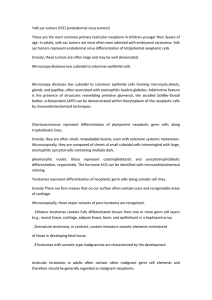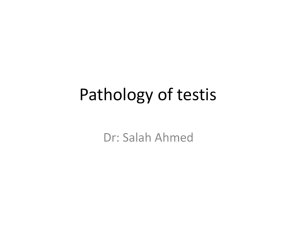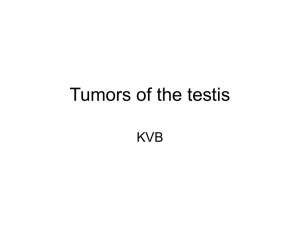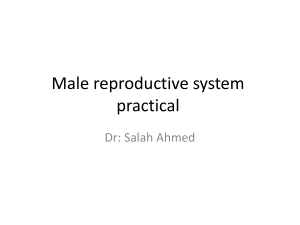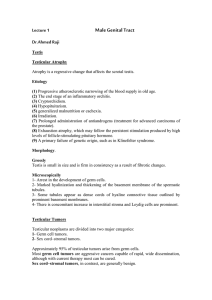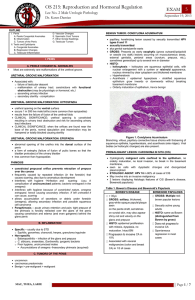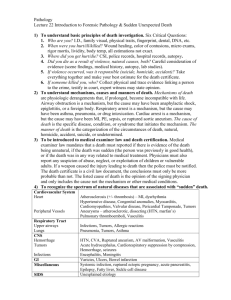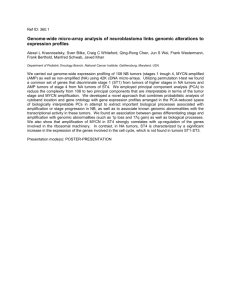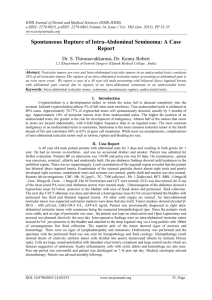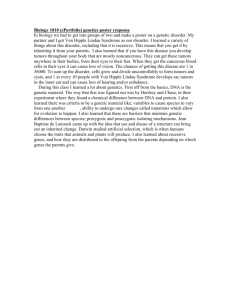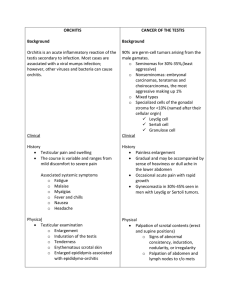TESTICULAR NEOPLASMS cell tumors of the testis
advertisement
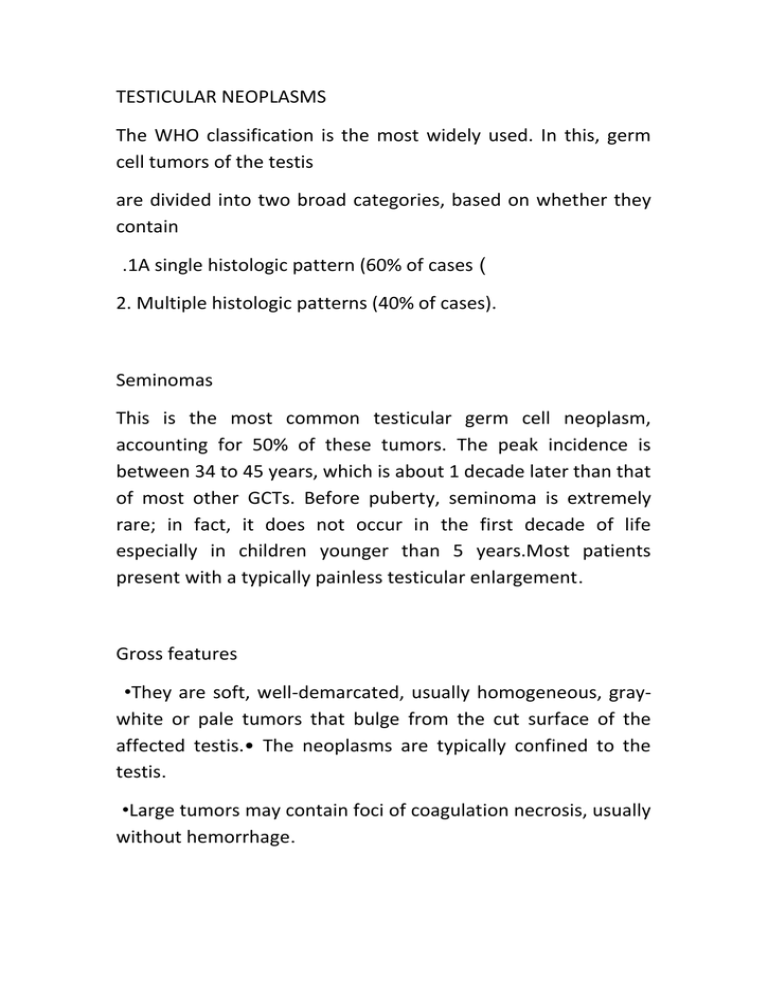
TESTICULAR NEOPLASMS The WHO classification is the most widely used. In this, germ cell tumors of the testis are divided into two broad categories, based on whether they contain .1A single histologic pattern (60% of cases ) 2. Multiple histologic patterns (40% of cases). Seminomas This is the most common testicular germ cell neoplasm, accounting for 50% of these tumors. The peak incidence is between 34 to 45 years, which is about 1 decade later than that of most other GCTs. Before puberty, seminoma is extremely rare; in fact, it does not occur in the first decade of life especially in children younger than 5 years.Most patients present with a typically painless testicular enlargement. Gross features •They are soft, well-demarcated, usually homogeneous, graywhite or pale tumors that bulge from the cut surface of the affected testis.• The neoplasms are typically confined to the testis. •Large tumors may contain foci of coagulation necrosis, usually without hemorrhage. Microscopically •Seminomas are composed of large, uniform cells with distinct cell borders, clear, glycogen-rich cytoplasm, and round nuclei with conspicuous nucleoli. •The cells are often disposed in small lobules with intervening fibrous septa. •A lymphocytic infiltrate is usually present. •A granulomatous inflammatory reaction may also be present. Embryonal carcinoma occurs most frequently between 25 and 35 years of age ,which is 10 years earlier than the age range for seminoma. It is rare after the age of 50 years and does not occur in infancy. Most patients present with a painless unilateral enlarging testicular mass. Approximately two thirds of cases have retroperitoneal lymph node or distant metastases at the time of diagnosis Gross features •Is an ill-defined, invasive tumor that contains foci of hemorrhage and necrosis •The primary lesions may be small, even in patients with systemic metastases. •Larger lesions may invade the epididymis and spermatic cord. Microscopic features. •The constituent cells are large and primitive (undifferentiated) looking, with basophilic cytoplasm, indistinct cell borders, and large nuclei with prominent nucleoli. Mitoses are frequent including abnormal ones •The neoplastic cells are disposed in solid sheets that may contain glandular structures and irregular papillae •In most cases, other germ cell tumors (e.g., yolk sac tumor, teratoma,choriocarcinoma) are admixed with the embryonal carcinoma. In fact, pureembryonal carcinomas are quite rare.
